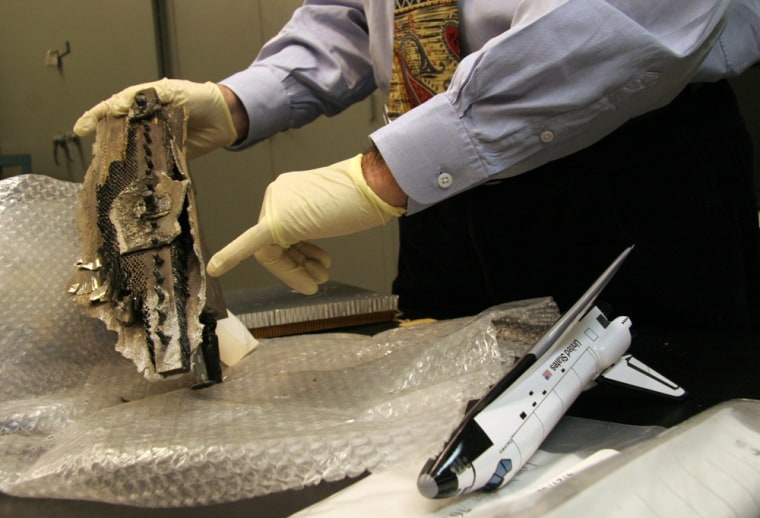When the space shuttle Columbia broke apart over Texas, it scattered 84,000 pieces of debris, and most of it has never been closely analyzed.
Now, two years after the disaster that killed seven astronauts, Lehigh University students are getting a rare look at these unexamined parts -- and NASA hopes their findings might contribute to the design of a next-generation space vehicle.
The eastern Pennsylvania school known for its engineering and science programs is the first university in the nation to be given access to the shuttle debris. A shipment of 50 pieces, ranging from windshield to wing, arrived last week.
Seniors in a failure analysis class are looking at each part under powerful electron and light microscopes, trying to determine when and why the part stopped working and how it reacted under the extreme forces to which it was subjected.
Microscopy will reveal the "telltale signs of the mode of failure," said Lehigh professor Arnold Marder, a materials science expert who served as a consultant at Kennedy Space Center last spring.
NASA's collaboration with Lehigh is part of a program, started last summer, under which pieces of the shuttle are being released to the aerospace industry for research. Students will present their findings to NASA officials in April.
Students understand the seriousness of their task.
"We feel like there's a responsibility not only to do a good job but to respect what happened on the flight," said Iping Lam, 21.
In the lab, Marder dons latex gloves and safety glasses, handling each part with care. Each piece has its own story to tell.
One hunk of structural aluminum is fractured in an unusual way. Aluminum is a ductile material, meaning it can be stretched thin without breaking. So why are the edges of this piece jagged, as if it had snapped in two? Did it fail in mid-air or on impact?
"Who knows what could have caused this? But we'll find out, I hope," Marder said.
While NASA scientists have given every piece of debris a cursory examination, most of their efforts were focused on the hunk of foam that tore away from the fuel tank during liftoff and caused a gash in the shuttle's left wing. That gash led to Columbia's destruction during re-entry.
By giving Lehigh access to the parts that haven't been studied, NASA gets basic research performed at no cost to the government.
"It's not a stretch to say that anything that Lehigh is doing, NASA would hope that data would help us design a better spacecraft," said Scott Thurston, vehicle manager of Atlantis and former vehicle manager of Columbia.
As an intern at Kennedy Space Center, Lehigh senior Angela Capece helped tabulate the number and size of foam impacts on all 113 shuttle flights. She recalls walking through the hangar where all the debris was laid out within Columbia's footprint.
"It's very sad, very somber," said Capece, 21, who is in Marder's class and plans to work in the aerospace industry after graduation. "Knowing what these pieces are supposed to look like and seeing them all distorted, it really is a graveyard."
